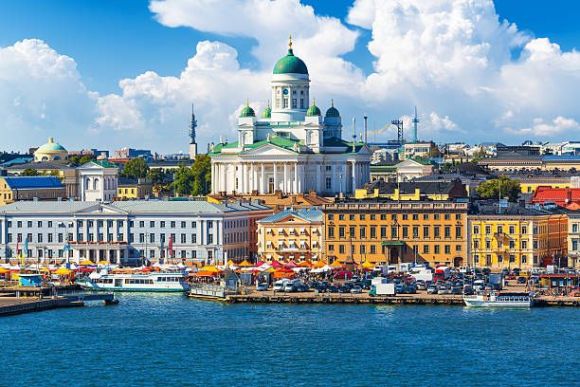
Helsinki, Finland. Picture: Creative Commons.
Saturday is usually associated with rest for most of us. It is a day when one can sleep in a little longer, scroll through social media for a while without leaving bed, meet friends, and dedicate more time to oneself . However, Saturday, October 5th, was a very productive day for the young participants of Youth4Regions. Simply put, this is a program for young journalists aimed at offering a glimpse into the inner workings of the EU and learning about important political decisions in their region.
So, the group of young journalists was on the move, learning more with each new session about what EU cohesion policy is and how it works. Essentially, cohesion policy is focused on reducing economic and social disparities between regions. Why is this necessary? To ensure the balanced development of all parts of the European Union and to provide equal access to basic services for all its residents. The scope of work is quite broad, as this policy can cover projects related to education, ecology, infrastructure and transport, poverty reduction, and so on. It involves billions of euros and probably just as much human effort in finding truly effective solutions. After all, each region has its own specific needs that must be addressed, while also ensuring that all proposed mechanisms function properly and genuinely help solve the problem.
Of course, as the policy is implemented, more and more information emerges, which is highly useful for tracking results, planning, and adjusting political decisions. It would be great to store this information in a single resource, or at least part of it. One can learn a lot from the Eurostat regional yearbook. Essentially, it is a large database that is updated annually and provides accessible information about what is happening in a particular region. During the session titled "Cities, Regions Go Green and Digital," it was discussed how data contributes to building a sustainable and digital future for European regions.
Reka Fodor, Assistant at the European Commission – Eurostat, highlighted several key statistical data points, including efforts to combat climate change, organic farming, the implementation of eco-transport, access to basic services, access to the internet, and more. These statistics also reveal some challenges in different regions of Europe, especially inequality between rural and urban areas, which remains a significant issue. Some regions lack access to modern technologies, while others, like Finland, demonstrate a high level of digital skills.
“I think it's good to know how far we are in reaching these goals and also good to know where those areas are where we still need to catch up. And also, when you present it at the regional level, you can see the differences between regions, and sometimes there are even differences within the country because you see data at the national level, and then it hides some important differences,” - said Reka Fodor, Assistant at the European Commission – Eurostat.
A data-driven approach ensures that future policy adjustments will be more favorable for each region and yield even better results. This resource is freely accessible, so one can also explore how things are happening in the area where one lives.
By Dariia Pidkoshena



